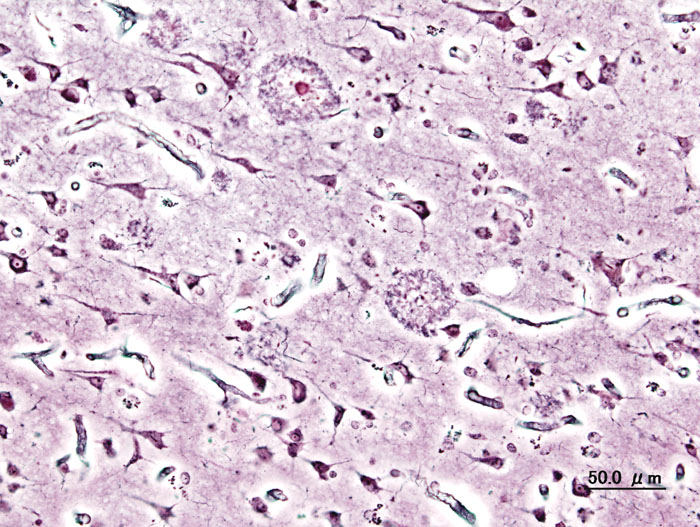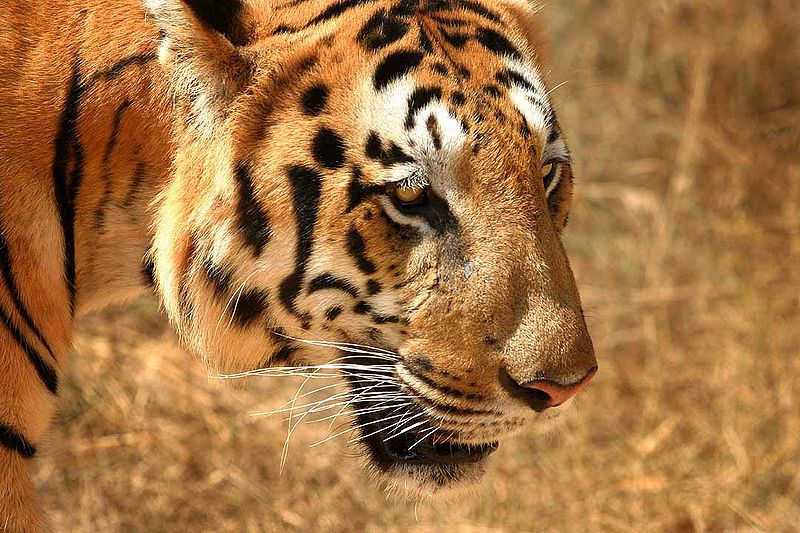News in a nutshell
| 4 April, 2011 | Adie Chan |
|

|
This week’s news includes an asthma drug that shows promise for Alzheimer’s, alarming diversity among breast cancers, the possibility of stem cell transplants for Japan’s nuclear plant workers, shocking estimates of bats’ economic worth, a genetic test for organ rejection, and a disputed rise in the number of wild tigers in India.
Asthma drug to treat Alzheimer’s?

An enzyme inhibitor already approved by the FDA to treat asthma could be repurposed for treating Alzheimer’s disease, Fierce Biotech Research reports. Known as Zileuton, the drug targets an enzyme that helps mediate the inflammation responsible for asthma, later found to also control the activation of gamma secretase, an enzyme that is involved in the production of the amyloid plaques found in the brains of Alzheimer’s patients. Mice treated with Zileuton displayed decreased buildup of amyloid plaques in the brain. Check out this month’s biobiz feature, which takes an in-depth look at other existing therapies that can be repurposed for new uses.
Diversity in breast cancer genomes
Sequencing of breast tumor genomes collected from 50 patients reveals a highly complex picture of breast cancer that beckons for the move away from the current one-size-fits-all approach to treatment. The sequencing tour de force scanned close to ten trillion bases in total and turned up 1,700 gene mutations — most of which were unique to the individual patients. Only three mutations were shared by at least 10 percent of the tumors. “The results are complex and somewhat alarming,” Matthew Ellis, the leader of the project, told Nature. Nevertheless, treatments that target rare mutations could still benefit thousands of breast cancer patients.
Stem cells for Fukushima workers?
Stem cell transplants could be used to treat workers of the Fukushima Dai-ichi nuclear plant if they suffer extensive damage to their bone marrow as a result of exposure to high levels of radiation. According to AOL News, Japanese authorities are considering harvesting and preserving stem cells from the workers in case they need a stem cell transplant in the future.
The cells of the bone marrow are extremely sensitive to radiation damage and are often the first to die after exposure. Damage to bone marrow cells results in a dangerous decrease immune function and an increased risk for developing leukemia, a cancer of the bone marrow.
Bats essential for US economy
By serving as nature’s furry pest control – devouring swarms of crop-destroying insects – bats may be worth at least $3 billion, and as much as $54 billion, to US agriculture. Unfortunately, bat populations in North America have become endangered in recent years and are at risk of extinction, due in great part to a mysterious, and highly virulent disease known as White Nose Syndrome, which has killed over 1 million bats since it first appeared in the US in 2006. According to a Wired article (which reports on a recent study published in Science), such exorbitant numbers concerning the value of bats to the US economy should prompt the government to increase funding for research aimed at counteracting the steep decline of bat populations.
Early cues of organ rejection
Fifty percent of heart transplant patients die within a decade after the procedure because their immune systems fail to accept the donated organ, but the current methods for monitoring patients for signs of organ rejection, which involve frequent biopsies, are both invasive and risky. Fortunately, blood-circulating DNA fragments unique to the donor could prove a surprisingly accurate marker of organ rejection, as rising blood levels of donor DNA is a sign that the immune system is killing heart cells. “It’s a very sensitive marker,” Hannah Valantine, a cardiologist at Stanford and a coauthor of the Proceedings of the National Academy of Sciences study, told Technology Review: Researchers detected a rise in donor DNA in patients who rejected their hearts before any signs of rejection were detected via biopsies.
Wild tigers on the rise?

There may be good tidings for the dwindling populations of tigers in India, which account for 60 percent of the world’s wild tigers. A recent million dollar survey that employed nearly 500,000 people to tally the country’s tiger populations, found a 12 percent increase since 2006Yet there are skeptics, according to ScienceInsider, who call the optimistic numbers the result of “statistical jugglery.” In fact, in the years since the last survey was carried out, the tiger’s natural habitat has been reduced by more than 20 percent, and there has been a rise in illegal activities, such as poaching.
Related News Stories:
[April 2011]
[23rd March 2011]
[5th August 2010]

|


the comment on the bats is very interesting. In Australia (Tasmania) tasmanian devils are becoming extinct (faster) because of a face cancer epidemic of unknown origin. Unfortunately except for tourism benefits, and obvious ecological reasons, there is no financial incentive to assist the development of a cure for this animal – one of the largest on the island.
It is a shame that it takes something like an article like this to highlight a problem that should be fixed by governments on morale grounds alone.